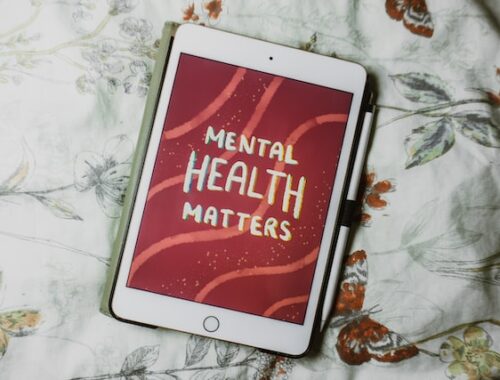Trauma can be defined as a deeply distressing or disturbing experience. It can have a devastating impact on our lives and can be very difficult to overcome. However, it is possible to heal from trauma with time, patience, and the proper support. In this blog post, we will discuss 12 steps that can help you begin the healing process.
1. Join a Support Group
One of the best things you can do when trying to heal from trauma is to join a support group. You will be able to meet other people going through similar experiences there. This can be incredibly helpful, as it can help you feel less alone and give you a chance to share your story with others who understand what you’re going through.
If there are no local support groups available, many online groups can be helpful.
2. See a Professional
If your trauma starts interfering with your daily life, it might be time to seek professional help.
The professionals best positioned to help on your journey towards recovery will vary depending on your situation. If you’re dealing with a trauma brought about by an accident, speaking to a trained health professional or physio is a crucial first step. Equally, while placing blame isn’t an instant fix, it’s often worth seeking the help of personal injury lawyers in instances where someone else’s negligence is at fault for your traumatic experience. This can be a great first step towards gaining closure, and may also result in some form of compensation with which you can begin to rebuild your life.
Whatever trauma you’re coping with, it’s also well worth seeking some form of therapy. A therapist can help you process what happened and develop healthy coping mechanisms. If unsure where to start, ask your doctor for a referral or look for a therapist online.
Before you start seeing a therapist, you must ensure they’re qualified to treat trauma. Look for someone who has experience treating people with PTSD or other mental health disorders. It’s also essential that you feel comfortable with them. It might not be the right fit if you don’t feel like you can open up to them.
3. Talk About What Happened
One of the most critical steps in healing from trauma is to talk about what happened. This can be incredibly difficult, but it’s essential for processing the event and beginning to heal. If you’re not ready to talk about it with someone else, you can also write about what happened or keep a journal.
It’s crucial to find an outlet that feels safe for you. For example, some people find it helpful to talk about their experiences with friends or family members, while others prefer to see a therapist. There is no right or wrong way to do this – whatever feels best for you is what’s most important.
4. Don’t Isolate Yourself
When dealing with trauma, it can be tempting to want to isolate yourself from the world. However, this is usually not helpful in the long run. When you’re isolated, you don’t have the support of others, and it can be easy to fall into negative thought patterns.
Instead of isolating yourself, try to stay connected with friends and family members. If you don’t feel like you have anyone to talk to, consider joining a support group or seeing a therapist.
5. Get Moving
Physical activity can be very helpful when you’re dealing with trauma. It can help to release built-up tension and improve your mood. Even something as simple as a daily walk can make a difference. If you’re not sure where to start, there are many different types of exercise classes available, or you could even hire a personal trainer.
Finding an activity that you enjoy and where you feel safe is essential. For example, many at-home workout videos are available online if you’re not ready for group classes.
6. Practice Relaxation Techniques
One way to begin managing the symptoms of PTSD is to practice relaxation techniques. For example, when your body feels tense and you start to experience anxiety or a panic attack, these techniques can help you calm down. Relaxation techniques include deep breathing, meditation, and progressive muscle relaxation.
You can also try yoga or Tai Chi, both forms of moving meditation. Exercise is another excellent way to relieve stress and tension. It releases endorphins, which have mood-boosting effects. A healthy diet is also vital for managing PTSD symptoms. Eating nutritious meals helps the body to heal and cope with stress in a better way.
7. Get a Pet
The benefits of pet ownership are well-documented. In addition to providing companionship, pets can reduce stress, anxiety, and loneliness. They can also help you to be more active and social. If you’re considering getting a pet, do your research first to find an animal that would fit your lifestyle and personality well.
While dogs are often thought of as the perfect therapy animals, any pet can provide emotional support. If you’re not ready for the commitment of pet ownership, consider volunteering at a local animal shelter or rescue organization. Spending time with animals can help to reduce stress and improve your mood. Labradors are especially good at helping people to feel calmer and more relaxed. You can check here to find pups up for adoption.
8. Challenge Negative Thoughts
One of the most common symptoms of PTSD is negative thinking. If you’re struggling with this, it can be helpful to challenge your negative thoughts. This means identifying the thoughts causing you distress and coming up with more realistic or positive alternatives.
For example, if you’re thinking, “I’m never going to be able to get over this,” try replacing it with “I’ve been through tough times before, and I can get through this too.” It might take some time to change your thinking, but it will be worth it in the end.
9. Avoid Alcohol and Drugs
It’s common for people to turn to alcohol or drugs as a way to cope with trauma. However, this is usually ineffective in the long run and can worsen symptoms. Getting help from a professional treatment program is essential if you’re struggling with addiction.
Many different types of programs are available, so you’re sure to find one that fits your needs. If you’re not ready for treatment, consider attending a support group or meeting with a therapist specializing in addiction.
10. Get Into a Routine
One of the best things you can do for yourself after experiencing trauma is to get into a routine. This might include regular meals, exercise, and sleep. Having a set schedule can help to reduce stress and anxiety and make it easier to stick to other healthy habits.
A routine can also give you a sense of control during a time when you might feel like everything is out of your hands. If you’re unsure where to start, many apps and websites can help you create a personalized routine.
11. Make Time for Fun and Relaxation
It’s essential to find ways to relax and have fun, even when dealing with trauma. Doing things that make you happy can help to reduce stress and improve your mood. Some ideas for relaxation include reading, listening to music, spending time in nature, and taking baths.
You might also want to try activities like journaling, painting, or scrapbooking. It’s important to find what works for you and make time for relaxation daily.
12. Talk About Your Experiences
One of the most important things you can do for yourself after experiencing trauma is to talk about it with someone who understands. This could be a therapist, a support group, or even a friend or family member. Talking about your experiences can help you to process them healthily and start to heal.
If you’re unsure where to start, many resources are available to help you find the right person to talk to. You can also check out online forums or chat rooms for people who have experienced similar things.
Healing from trauma is a process that takes time, but it is possible. By following these steps, you can begin to overcome your experiences and start to build a more positive future. Remember to be patient with yourself and to seek professional help if you need it. With time and effort, you will heal.




